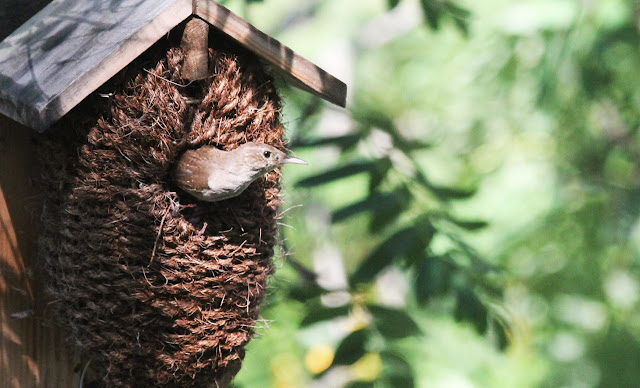… but I occasionally catch him bringing her food.
- For House Wren eggs, temperature inside the nest box can be critical to survival. If a sun-drenched nest box warms above about 106 degrees Fahrenheit for an hour, the eggs will begin to die. If a cold snap chills a nest below about 65 degrees Fahrenheit for more than a day it can also doom the eggs. https://www.allaboutbirds.
org/guide/House_Wren/ lifehistory - For an egg to develop normally, it must be exposed for a considerable length of time to temperatures a few degrees below the normal 104 degrees F (40 degrees C) avian body temperature. Indeed, the ideal incubation temperature for many birds' eggs is about human body temperature, 98.6 degrees F. Almost all birds create the required temperature by sitting on the eggs and incubating them, often transferring heat via a temporarily bare area of abdominal skin called the "brood patch.”
- Egg temperature is regulated in response to changes in the temperature of the environment by varying the length of time that a parent bird sits on them or the tightness of the "sit." For instance, female House Wrens (which incubate without help from the males) sat on the eggs for periods averaging 14 minutes when the temperature was 59 degrees F (15 degrees C), but an average of only 7.5 minutes when it rose to 86 degrees F (30 degrees C) https://web.stanford.edu/
group/stanfordbirds/text/ essays/Incubation.html
Try as I could— I could find no information on the flight speed of wrens but they are really really fast. From the second last to last picture was less than one second I was shooting with a high shutter speed (all the way up to 1/8000 second) and it still got away on me!



